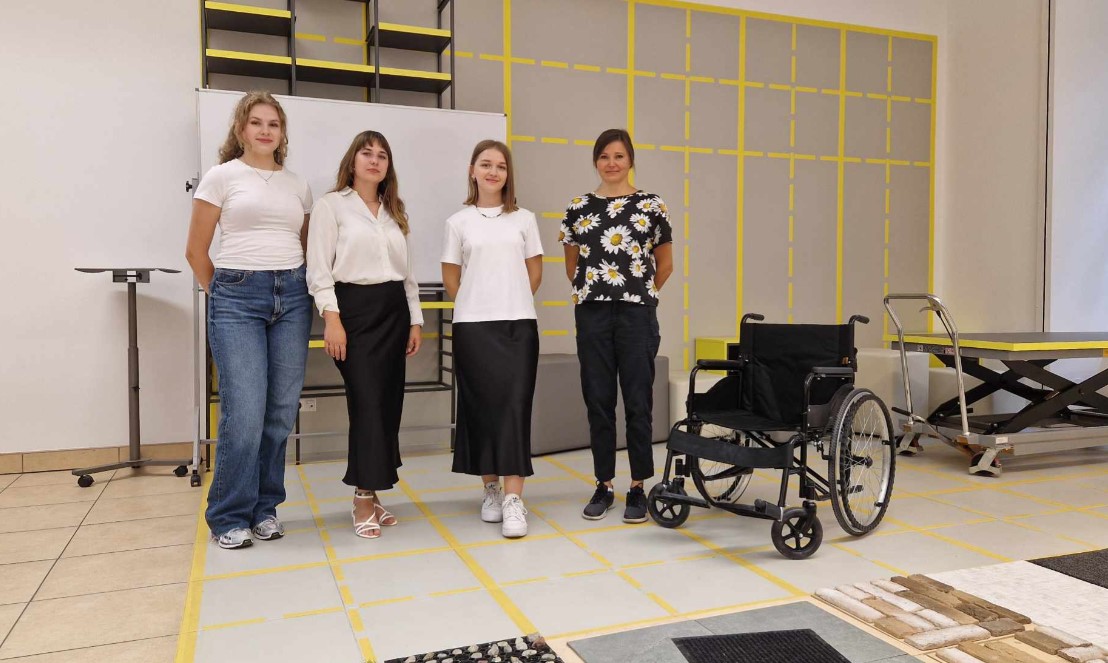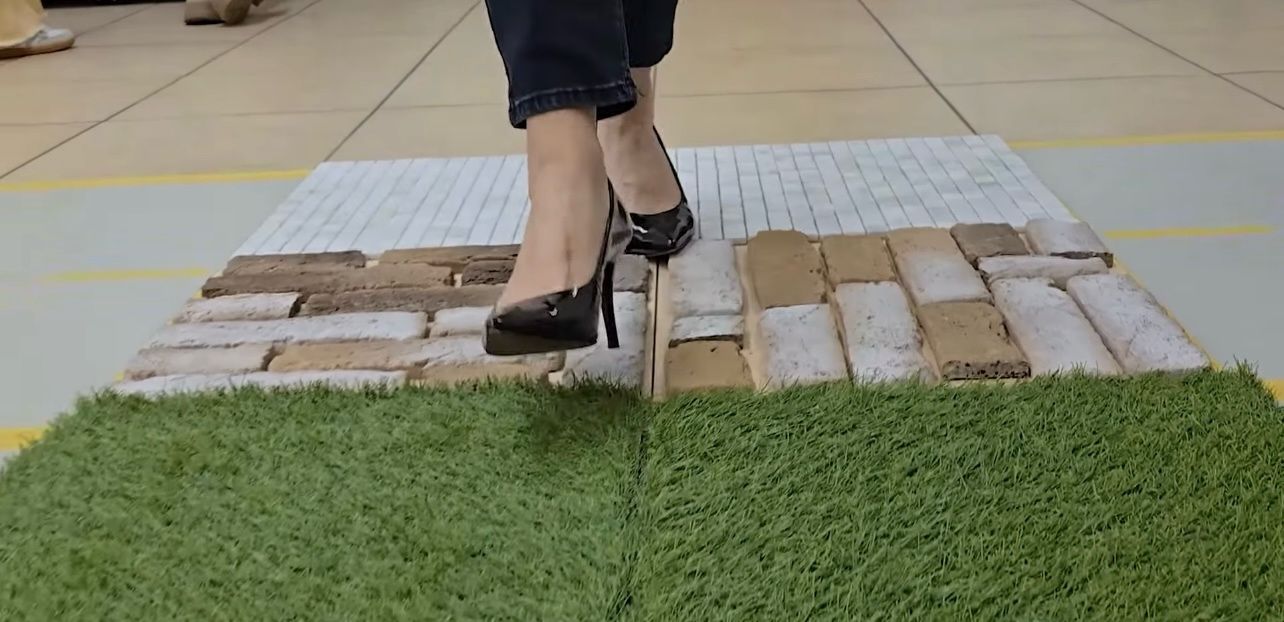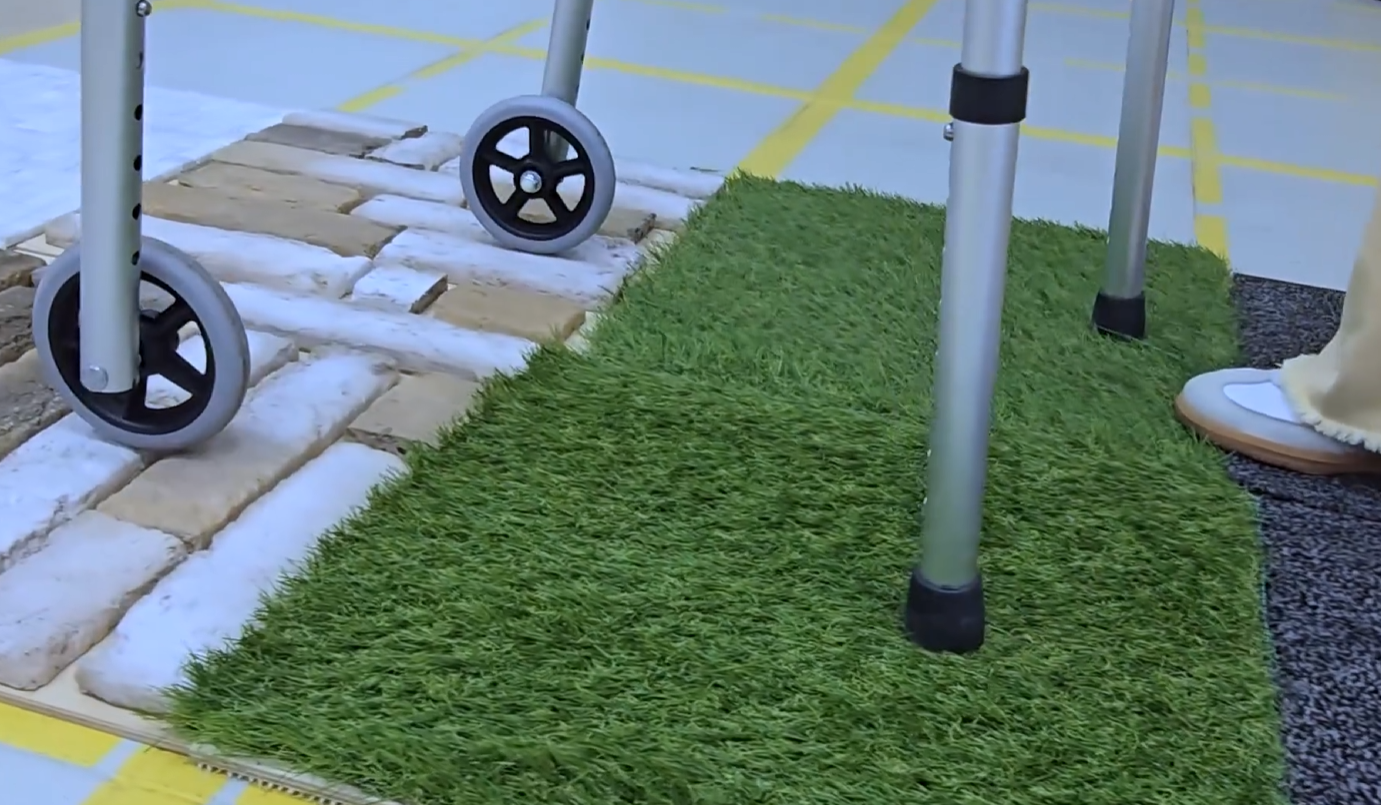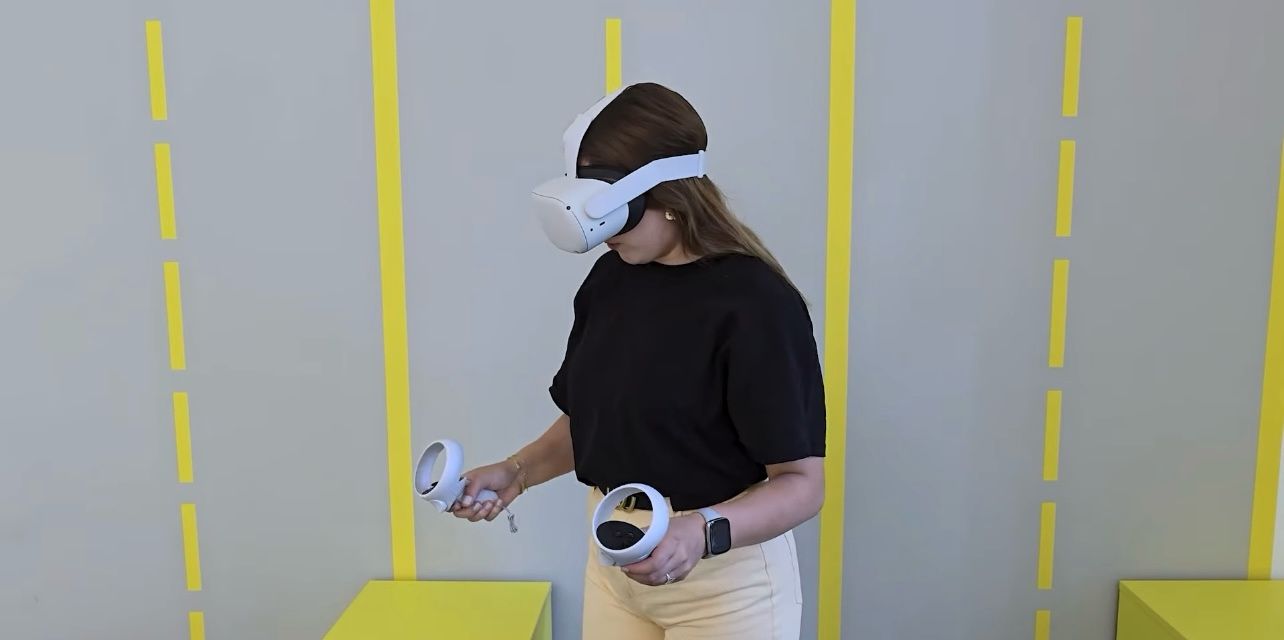International scientific conference "Common Tomorrow" Kielce 2024
Collaboration with Wiktoria Sitko
The Accessibility Ground is an innovative initiative that highlights important issues related to surface design in public spaces. Did you know that seemingly "ordinary" surfaces can be real obstacles for people with disabilities?
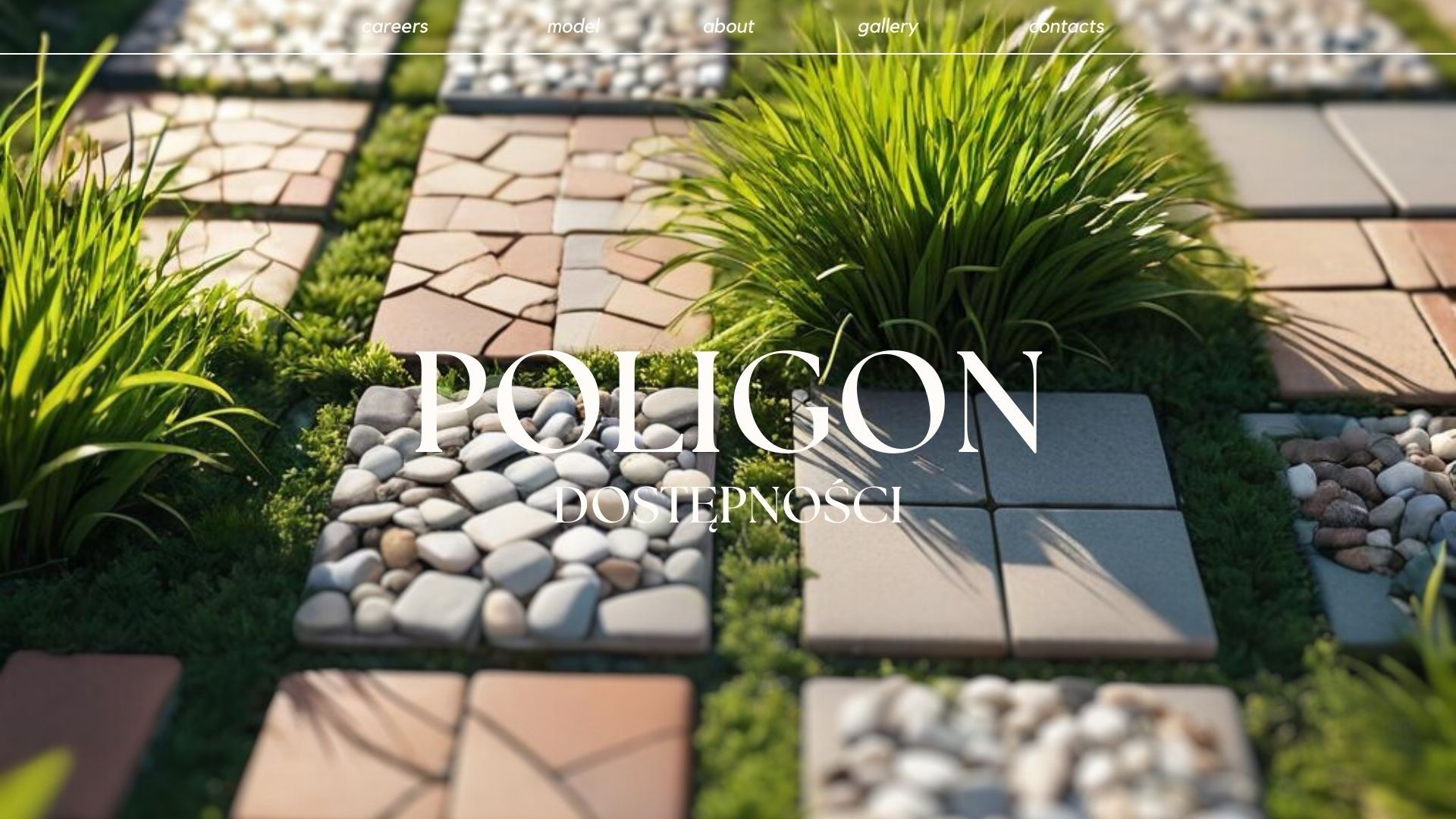
-
Where did the idea for the Accessibility Ground come from? What was the inspiration?
The idea for the Accessibility Ground originated from an initiative by architecture students under the guidance of Prof. Patrycja Haupt, who has been working on the issue of accessibility in public spaces for many years. The inspiration for creating this project stemmed from the need to draw attention to the difficulties faced daily by people with disabilities. Issues related to the quality of surfaces affect everyone, regardless of their abilities, which is why it is essential to educate and raise awareness about the importance of well-designed spaces. -
When did the idea to create the Accessibility Ground first emerge? How did the initial assumptions differ from the current version?
The concept of creating the Accessibility Ground first appeared a year ago, and the positive reception of the project's subsequent stages inspired its creators to continue its development. The initial assumptions included creating an educational path with the most common surfaces found in public spaces, which was later integrated into a sensory path. Over time, the project was expanded with additional elements, such as doormats, allowing for a more comprehensive presentation of problems related to various surfaces. The Accessibility Ground is a dynamic project that constantly evolves, aiming not only to identify problems but also to educate about solutions. -
What makes the Accessibility Ground unique? What elements does it consist of? What challenges were encountered during the design process?
The Accessibility Ground stands out due to its modular design, which allows for easy reconfiguration and adaptation to various test scenarios. Thanks to the use of 45x45 cm tiles, the project enables quick changes in the layout of surfaces, such as grass, gravel, tiles, or stones. This variety makes it possible to replicate the difficulties faced by people with disabilities in daily life. The design challenge was to ensure that these elements were both realistic and functional, which allowed for effective education for users of the Polygon. -
What information from discussions with accessibility experts and online surveys was surprising to you, and why?
One of the biggest challenges in creating the Accessibility Ground was replicating the real difficulties that people with disabilities face in public spaces, as well as finding universal design solutions. An example of this is the use of natural curbs, which, although helpful for people with low vision, may pose obstacles for people with mobility impairments. The Polygon serves not only as an educational tool but also as a platform for searching for better solutions with the involvement of future generations of students.
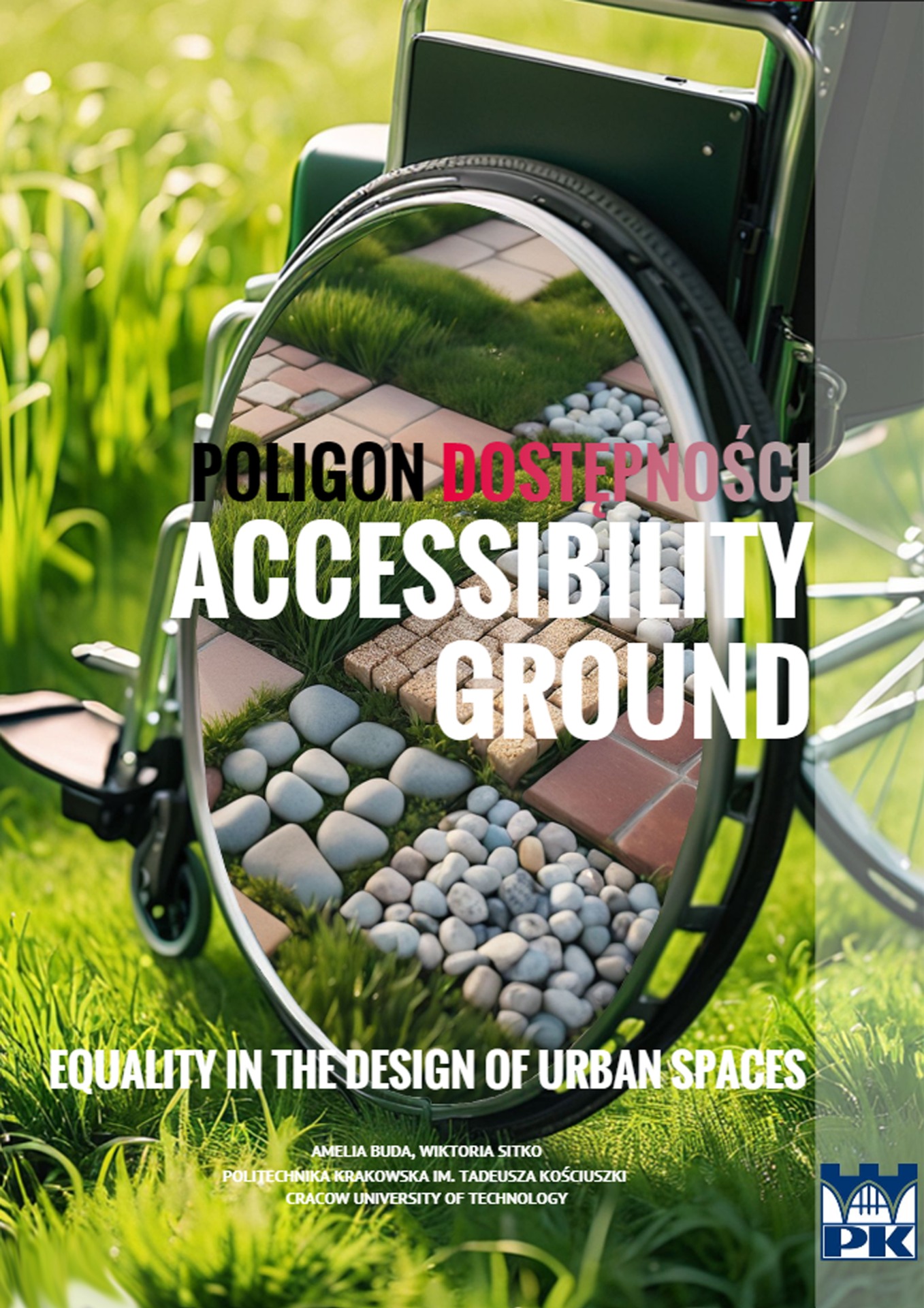
The project was created within the Sustainable Design Scientific Circle at the Cracow University of Technology, with the support of the Student Innovation Laboratory FutureLab PK. The project was initiated by Anna Zagórska, Antonina Wójtowicz, and Weronika Żuławska (graduates of PK who started the project), and further developed by Wiktoria Sitko, Amelia Buda, Jakub Potoniec (3rd year), Angelika Szydłowska, Anna Michalik, Emilia Sitek, Gabriela Rotter, Karolina Świdzińska, and Zuzanna Rosa (2nd year).

